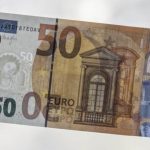
The brokerage firm suggests that any dips below 1.10 could be an opportunity to reduce USD exposure, implying a strategic adjustment in response to the anticipated currency movements.
UBS anticipates that the Fed will begin its easing cycle in September, with rate cuts potentially more aggressive than those of its global peers.
This shift is expected due to inflation moving towards targets, a softening labor market, and the end of growth above potential, which UBS believes does not warrant a highly restrictive monetary policy any longer.
UBS’s outlook suggests that the past three years of U.S. economic outperformance relative to other countries justified the Fed’s higher interest rates. However, the changing economic conditions in the U.S. are set to end the period of “USD exceptionalism” that kept the dollar at elevated levels.
The firm anticipates the combination of these domestic factors will contribute to a broad weakening of the USD.
In contrast, Europe’s growth remains weak, but not to the extent that the European Central Bank (ECB) is expected to alter its current course.
UBS forecasts the ECB will reduce rates by 25 basis points per quarter throughout the year and possibly until mid-2025. The ECB’s less aggressive approach compared to the Fed’s expected cuts is seen as a relative advantage for the euro.
Moreover, the trade balance surplus in Europe, which had previously supported the euro, is back to pre-Ukraine-war levels after a temporary deficit caused by the energy crisis in 2022. This recovery in the trade balance is again seen as a factor bolstering the euro.
This article was generated with the support of AI and reviewed by an editor. For more information see our T&C.
To read the full article, Click Here

